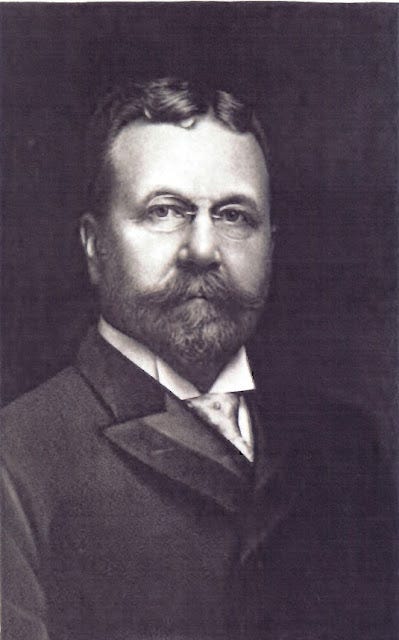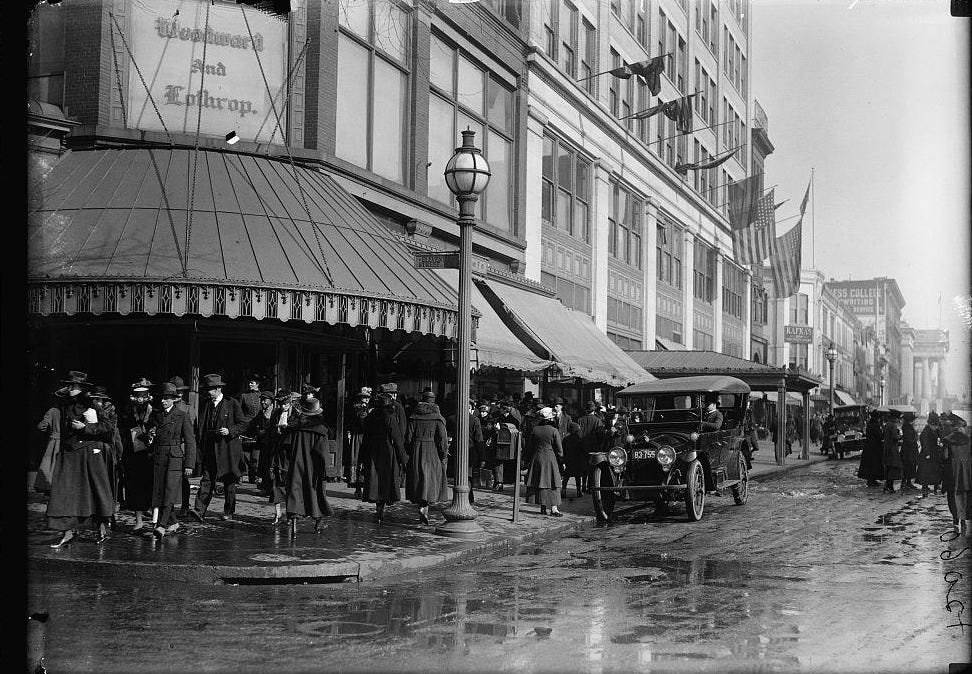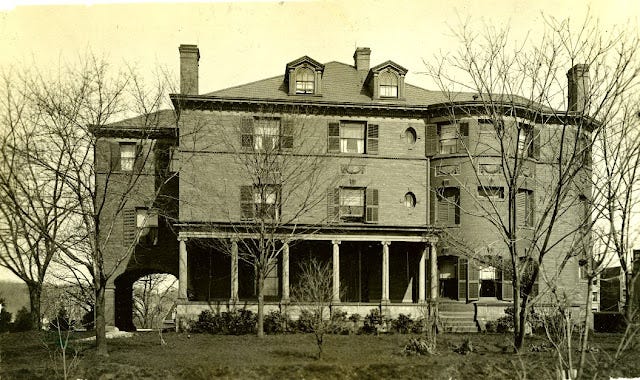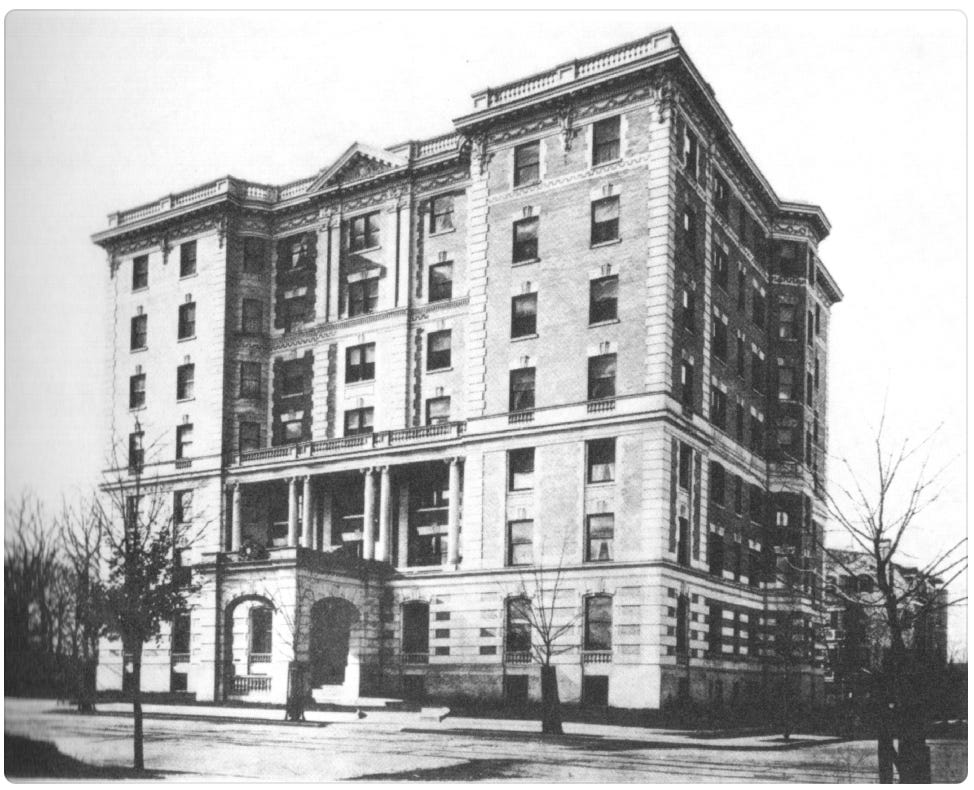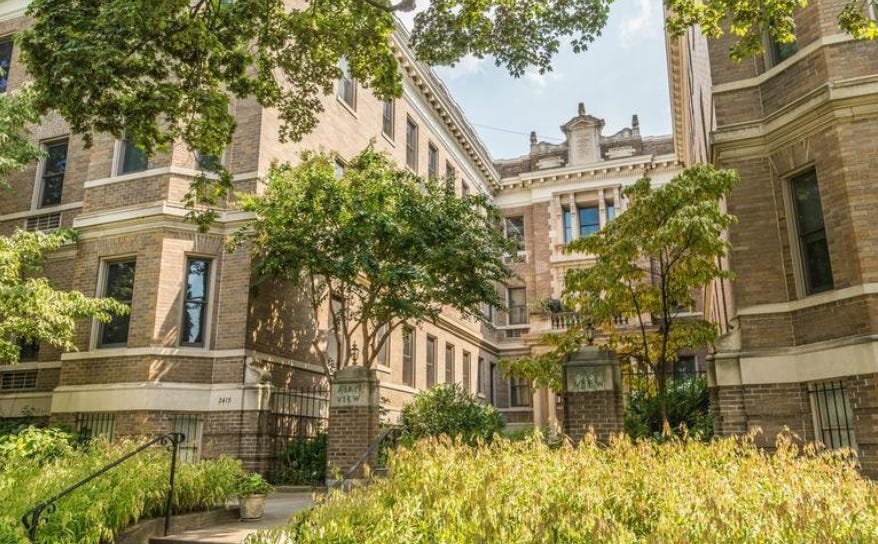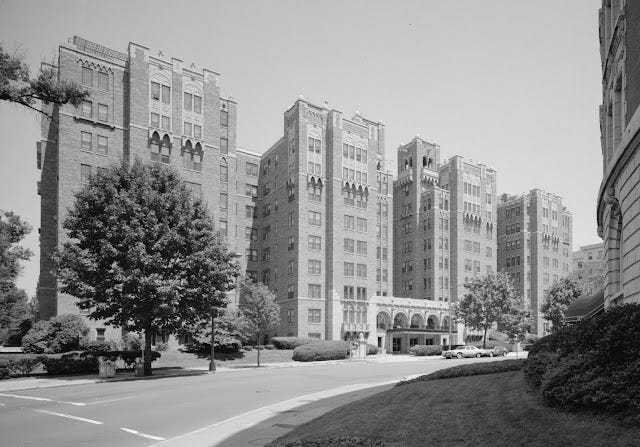Samuel W. Woodward: Department Store Magnate and Real Estate Developer
Samuel Woodward was born in Damariscotta, Maine, on December 13, 1848. In 1873, he established a dry goods business in Chelsea, Massachusetts with partner Alvin Lothrop. After opening several stores in the Boston area, they joined with Charles E. Cochrane and moved to Washington in 1880.
Starting as the “Boston Dry Goods House,” Woodward, Lothrop, and Cochrane stood out from other merchants in the District at the time with its then-revolutionary model of “one price.” Prices were fixed and no negotiation was ever required. Another innovative practice that they introduced was that customers could also return products they were unsatisfied with for cash refunds, not just store credit. Woodward and Lothrop also began the first clearance sales, which they called “Remnant Day,” selling unsold merchandise at a discount.
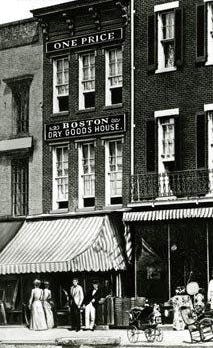
In 1886, Woodward built a house for himself located at 2015 Wyoming Avenue designed by architect Eugene Clarence Gardner. Woodward selected the location of the highest elevation in Kalorama Triangle, sitting at the top of the rise of the hill on Connecticut Avenue that looked down on Connecticut Avenue before descending into the Rock Creek Valley.
Woodward and Lothrop would not only be business partners, but close friends who would also become neighbors when Lothrop built his stately mansion just south of Woodward’s on the site of the Tindall house.
In addition to his success in the retail business, Woodward was also one of Washington’s noted builders. In 1903, Woodward founded the Woodley Apartment House Company and constructed the Woodley Apartment building at 1851 Columbia Road. It was the first apartment building constructed on Columbia Road and was designed by one of Washington’s prominent architects, Thomas Franklin Schneider. In 1894, Schneider had designed the Cairo Flats (now the Cairo Condominiums) at 1615 Q Street NW, which is still the second-tallest building in Washington, D.C., after the Washington Monument.
After getting his feet wet in real estate with the Woodley apartment building, Woodward then partnered with architect Frederick Pyle, who had designed many town houses along Calvert and Biltmore Streets, to build eleven town houses on Leroy Place and Bancroft Place in 1907 in the Sheridan-Kalorama neighborhood. Woodward had also built other four modest apartment buildings in 1908 and 1912.
In 1909, Woodward selected a location on land he owned not far from his house, along the curve where Connecticut Avenue connects to the Taft Bridge, to build his namesake apartment, the Woodward, located at 2311 Connecticut Avenue. The reason that Connecticut Avenue now jags to the west before the Woodward building today is that Woodward was successful in lobbying District Commissioners to avoid around his property while they were charting the course for extending Connecticut Avenue to the Taft Bridge in the 1890s.
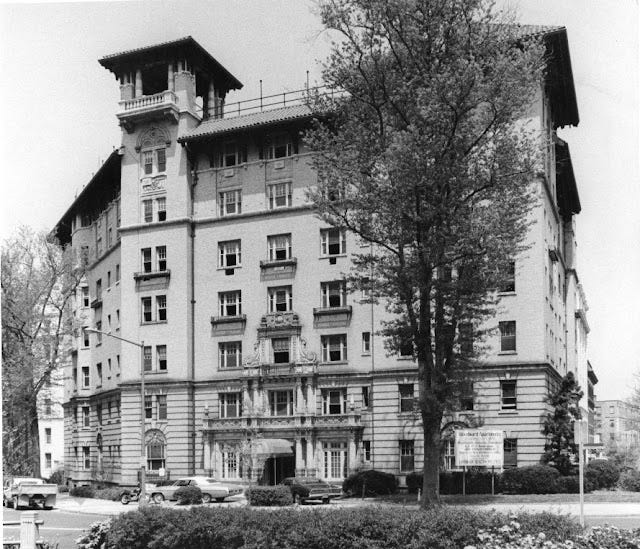
Woodward enlisted the architectural firm of Harding & Upman and, in 1909, started construction of a seven-story Mission Revival–style apartment house of brick and iron. When it was ready for occupancy in October 1910, it offered a total of forty-five rental apartments. Three apartments located over the building’s entrance were duplex units, with a dining room, kitchen, pantry, parlor and library on the first level and three bedrooms and a bath on the second. The building originally offered many amenities including a roof garden, a summer pavilion and a doctor’s office on the ground floor. The basement contained a party room, a billiard room and a barbershop. In 1973, the Woodward would be converted into a condominium.
In 1910, Woodward undertook what would be his final building project, the Airy View, located at 2415 Twentieth Street, NW. The building remains unique in Kalorama Triangle, as it is the only one with a central bay pushed back from the street to create an enclosed courtyard, a popular configuration of Washington apartment buildings at this time.
Samuel Woodward died in 1917 and is buried in Oak Hill Cemetery in Washington. His house on Wyoming Avenue was razed in 1926 for the construction of 2101 Connecticut Avenue. The Woodward, Woodley, and Airy View apartment buildings still stand in the Kalorama Triangle neighborhood,


